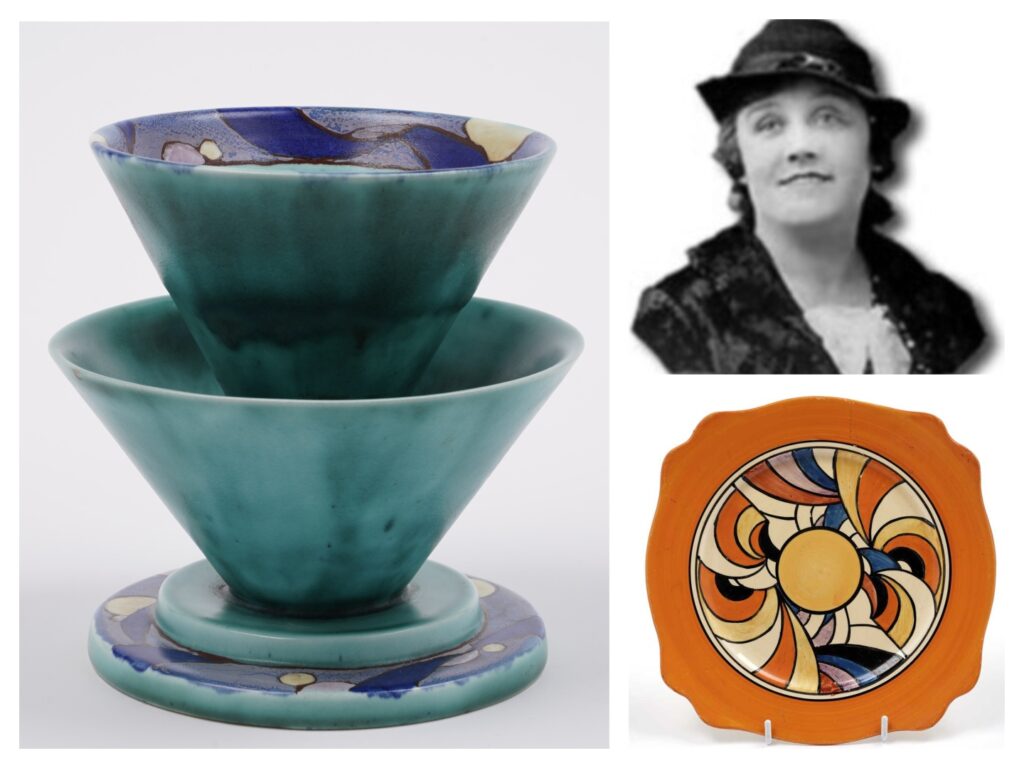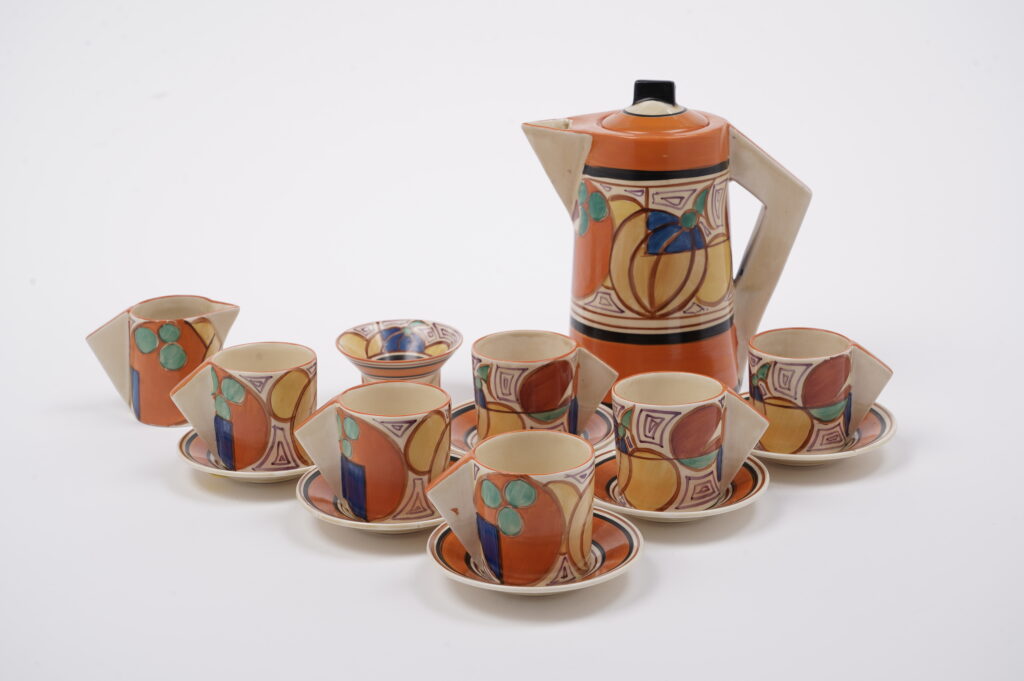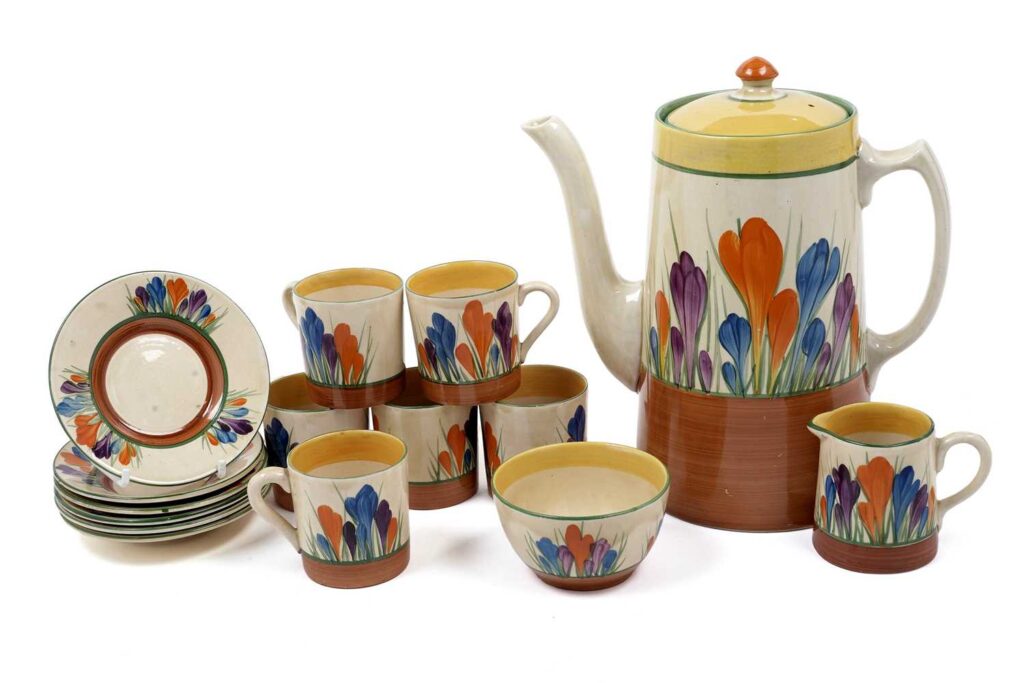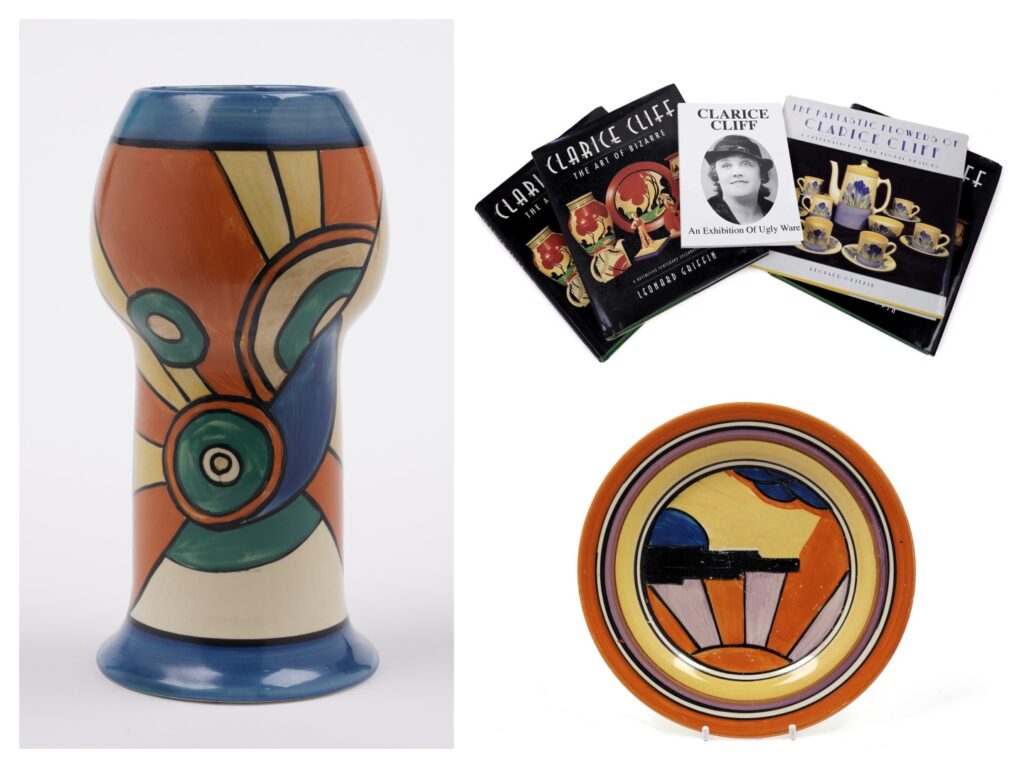
At the age of 13 Clarice Cliff — one of a family of seven children — started work in the pottery industry.
Born in Stoke in 1889, her job in The Potteries was that of a gilder, adding gold lines on pottery of traditional design.
She would go on to produce work in such a vibrant range of colours and designs that today she is regarded as one of the most influential ceramics artists of the 20th century and her output is collected worldwide.

One of the North East’s leading collectors was Dr Philip Woodward, from Gosforth in Newcastle.
He gained a degree in ceramics at Newcastle University and completed a PhD on Victorian covered markets.
Dr Woodward, who died earlier this year, amassed a collection of around 300 Clarice Cliff items, which will be sold by Newcastle auctioneers Anderson & Garland on July 23-24.

The collection is believed to be the biggest set of Clarice Cliff work to ever come on to the market in the North East and the 138 lots are expected to realise a total of £20,000-£30,000.
“Dr Woodward had a passion for the work of Clarice Cliff and was quite an authority on her,” said Julian Thomson, managing director of Anderson & Garland.
“Her use of colours and shapes was a total change over what had gone before and it is still highly popular today.
The collection includes tea, breakfast and coffee services, dinnerware, plates, bowls, teapots, cups, jars, jugs, bowls, cruet sets, candlesticks, pots and vases.
- Read more: Globe Gallery’s story comes full circle
- Read more: Alnwick Castle to showcase homegrown fashion
One of the items, a Melon pattern coffee service, is estimated at £1,000-£2,000.
“This extraordinary and significant collection features rare designs and celebrates the timeless work of one of the 20th century’s most influential ceramic artists,” said Mr Thomson.
“This remarkable collection is expected to achieve significant interest due to its vast variation.”
Cliff moved to AJ Wilkinson’s pottery factory in 1916, where she eventually earned her own studio. It was there that her ‘Bizarre’ wares range was launched in 1927.
In 1928 she created a pattern of Crocus flowers made from individual brushstrokes, hand-painted in bright colours and in 1930 a separate decorating department was set up to meet demand.

Her Fantasque range evolved between 1928 and 1934 and mainly featured abstracts or landscapes of cottages and trees, as well as some Art Deco inspired patterns. Between 1929 and 1935 Cliff issued a mass of shape ranges.
Clarice Cliff’s fame and success grew in the 1930s.
Dr Woodward, writing in book The Bizarre Art of Clarice Cliff wrote that between 1928 and 1936, ‘360 articles about Cliff and her work were published in the trade press, women’s magazines, national and local newspapers’.
Cliff died in 1972. In April this year a Historic England plaque was placed at the flat where she lived in Stoke.











